Physical Address
304 North Cardinal St.
Dorchester Center, MA 02124
Diagnosis
Presentation: in 1st and 2nd decades.
Signs: (a) slightly elevated pigmented bulbar lesion of variable size and pigmentation, (b) often juxtalimbal ( Fig. 12.1 ); (c) cystic spaces are common.
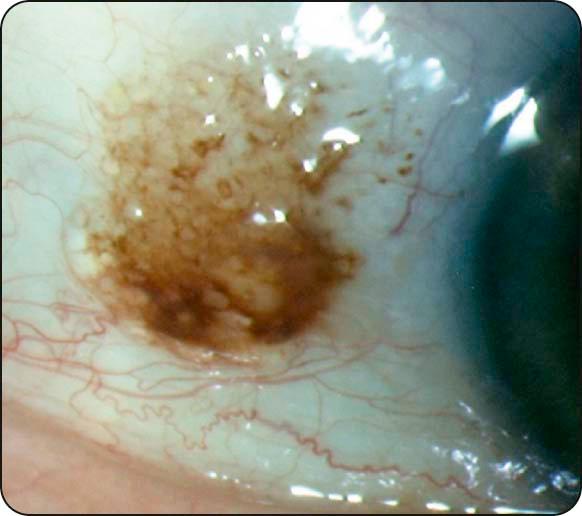
Signs of potential malignancy: (a) prominent feeder vessels, (b) sudden growth or increase in pigmentation, and (c) development after the 2nd decade, particularly in an unusual site such as palpebral or forniceal conjunctiva.
Treatment: excision, usually for cosmetic reasons; less commonly for irritation or suspicion of malignancy.
Pathogenesis: often infection with human papillomavirus (especially types 6 and 11), particularly in childhood.
Diagnosis: (a) solitary pedunculated or sessile lesion; (b) most frequently juxtalimbal ( Fig. 12.2 ), in the fornix ( Fig. 12.3 ), or caruncle; (c) may occasionally be multiple and confluent.
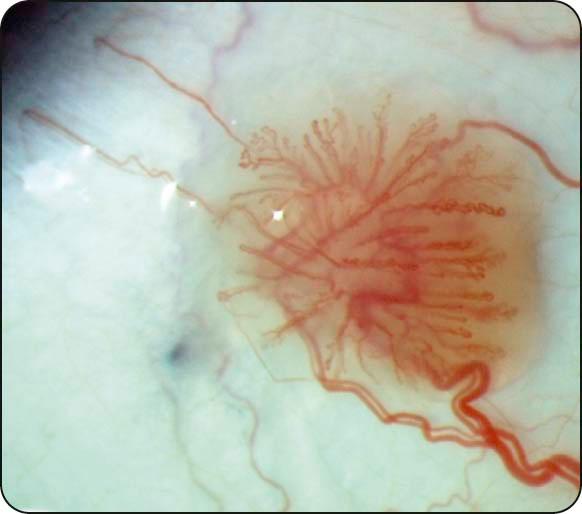
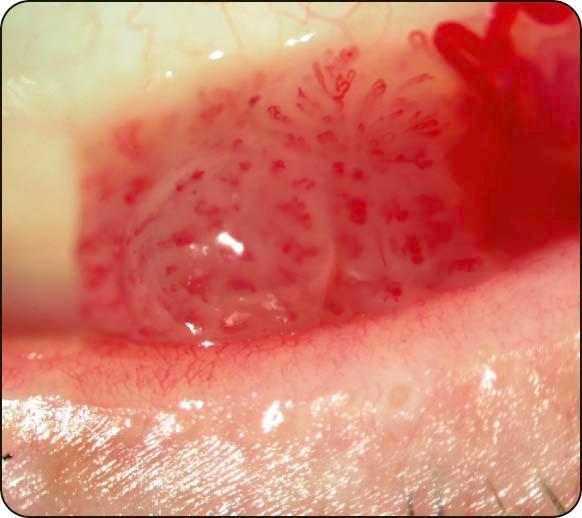
Treatment: small lesions often resolve spontaneously; large papillomas may require excision, sometimes with cryotherapy to the base and surrounding area.
Histology: solid mass of collagenous tissue containing dermal elements covered by stratified squamous epithelium.
Diagnosis
Presentation: in early childhood.
Signs: (a) smooth yellowish subconjunctival mass of soft consistency; (b) most frequently at the inferotemporal limbus; (c) protruding hair may be seen ( Fig. 12.4 ).
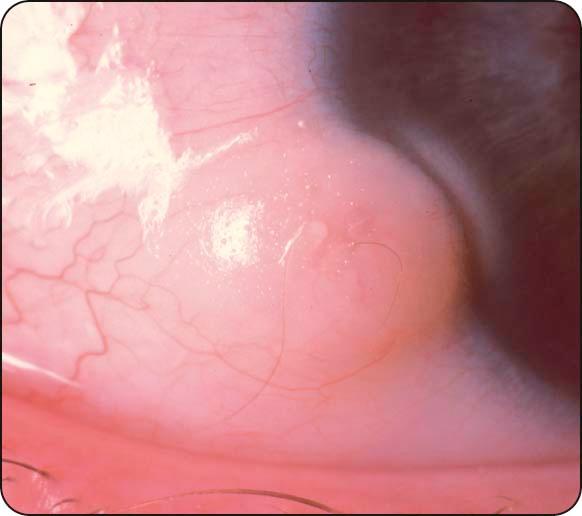
Systemic associations: Goldenhar syndrome (oculoauriculovertebral spectrum) and, less commonly, Treacher Collins syndrome.
Treatment: small lesions are excised; large dermoids may require lamellar keratosclerectomy.
Pathogenesis: fibrovascular proliferation in response to a conjunctival insult such as surgery, trauma, or ruptured chalazion; spontaneous lesions are rare.
Diagnosis
Presentation: typically a few weeks after surgery, with a fast-growing, pink, fleshy, vascularized conjunctival mass near a wound ( Fig. 12.5 ).
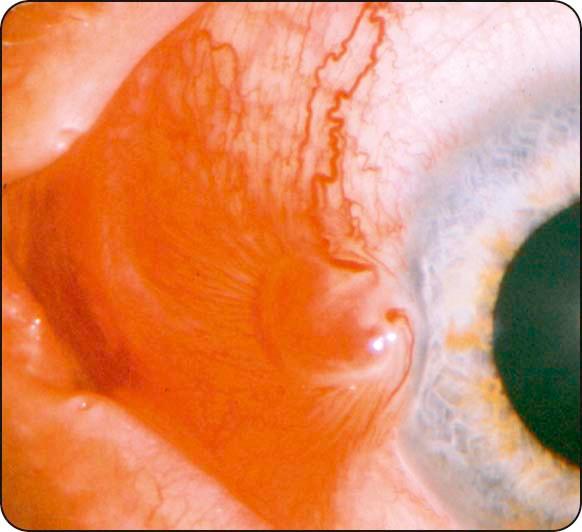
Differential diagnosis: (a) suture granuloma, (b) vascular tumour, and (c) Tenon granuloma or cyst.
Treatment: topical steroids; excision of resistant cases.
Definition: very common in dark-skinned individuals; both eyes are affected, often asymmetrically.
Diagnosis: (a) areas of flat, patchy, brownish pigmentation scattered throughout the conjunctiva, (b) more intensely at the limbus and around perforating vessels or nerves as they enter the sclera (Axenfeld loop; Fig. 12.6 ); (c) the pigment lies within the epithelium and therefore moves freely over the surface of the globe.
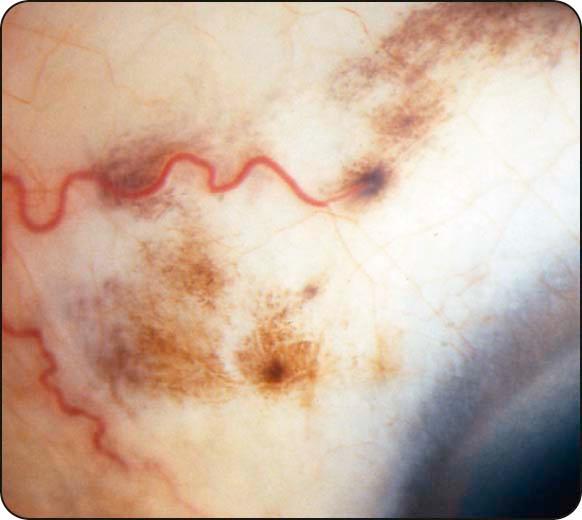
Definition: unilateral condition typically affecting white individuals older than 45 years of age. There are two histological variants which cannot be distinguished clinically.
PAM without atypia: no risk of malignant transformation.
PAM with atypia: regarded as melanoma in situ has a 50% chance of infiltrative malignancy within 5 years.
Diagnosis
Signs: (a) irregular solitary or multifocal areas of flat, golden brown to dark chocolate epithelial pigmentation; (b) seen most commonly in the interpalpebral region, although any part of the conjunctiva may be affected ( Fig. 12.7 ).
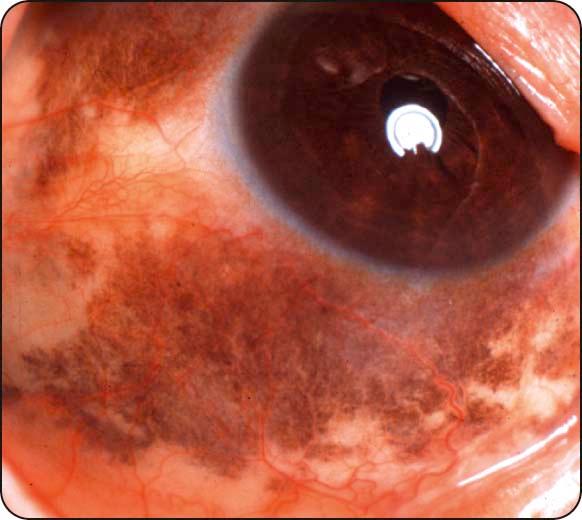
Course: (a) PAM may expand, shrink, or remain stable for long periods, (b) may focally lighten or darken, and (c) malignant transformation should be suspected if a flat lesion becomes nodular.
Treatment: (a) small lesions may be excised; (b) large lesions should undergo incisional biopsy from various sites, with subsequent cryotherapy or topical mitomycin C for PAM with atypia.
Origin: (a) from PAM with atypia (75%), (b) pre-existing naevus (20%), or (c) de novo.
Diagnosis
Presentation: in 6th decade.
Signs: (a) black, grey, or pinkish (amelanotic) vascularized nodule; may be fixed to the episclera, (b) commonly at the limbus ( Fig. 12.8 ), but may develop anywhere, and (c) multifocal lesions can arise from PAM with atypia as areas of thickening and nodularity ( Fig. 12.9 ).
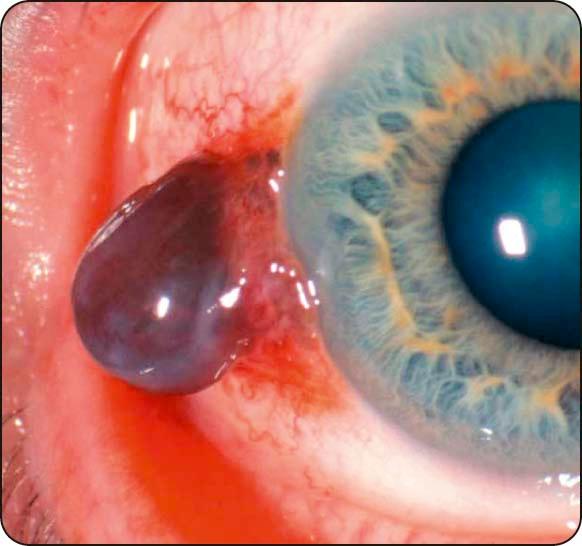
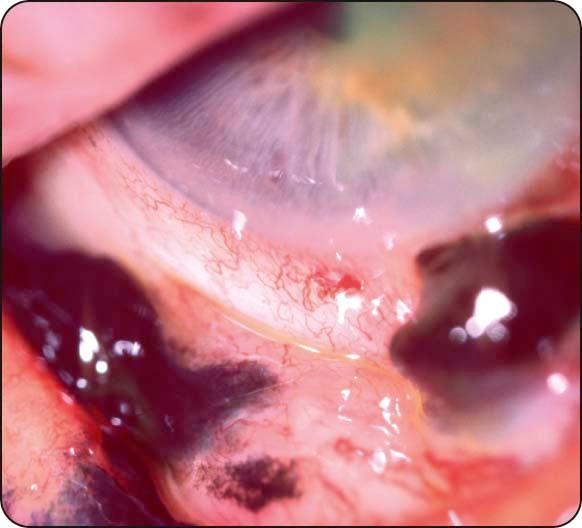
Poor prognostic indicators: (a) multifocal tumour, (b) forniceal location, and (c) thickness of 2 mm or more; mortality at 10 years is 25%.
Differential diagnosis: (a) large naevus, (b) ciliary body melanoma with extraocular extension, (c) melanocytoma, and (d) pigmented conjunctival carcinoma.
Treatment: excision with a wide-margin lamellar scleroconjunctivectomy and cryotherapy; radiotherapy to the base if deep extension is present histologically.
Definition: spectrum of benign, premalignant and malignant unilateral slowly progressive epithelial lesions of the conjunctiva and cornea.
Risk factors: (a) excessive ultraviolet exposure, (b) human papilloma virus infection, (c) AIDS, and (d) xeroderma pigmentosum.
Diagnosis
Presentation: in old age with irritation or a visible mass within the interpalpebral fissure; commonly juxtalimbal, but may involve any part of the conjunctiva or cornea.
Signs: variable and limited correlation with histological type: (a) gelatinous mass with superficial vessels, (b) elevated white leucoplakic plaque ( Fig. 12.10 ), (c) fleshy pink papillomatous lesion with prominent feeder and surface blood vessels ( Fig. 12.11 ); (d) can masquerade as chronic conjunctivitis; corneal involvement may occur ( Fig. 12.12 ).
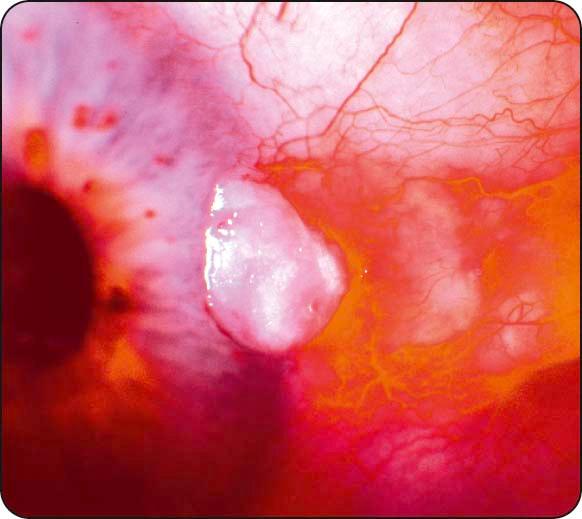
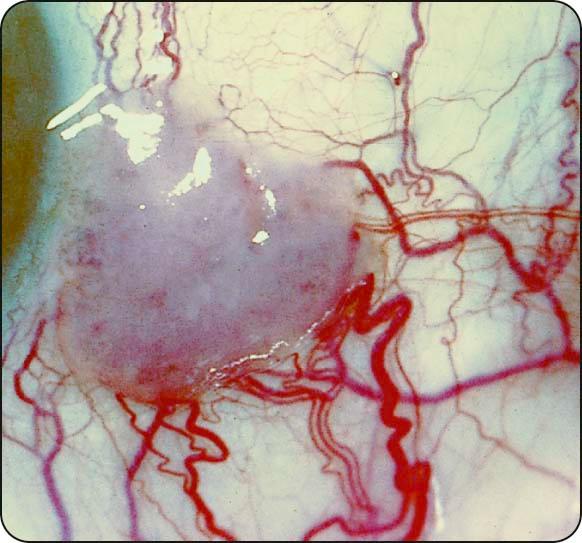
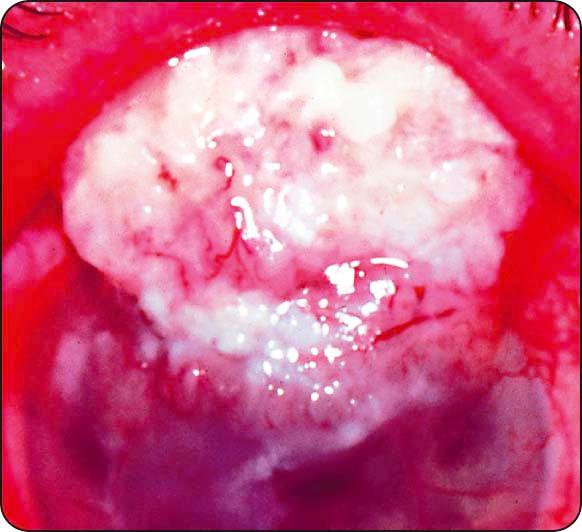
Spread: intraocular extension is uncommon and metastatic disease extremely rare.
Investigations: ultrasonic biomicroscopy (UBM) to estimate the depth of invasion, and impression cytology.
Treatment: (a) excision with 2 or 3 mm margins and assessment of clearance with frozen sections; (b) adjunctive measures aimed at reducing recurrence include cryotherapy, brachytherapy, and topical chemotherapy.
Pathology: most conjunctival lymphoproliferative lesions consist of reactive lymphoid hyperplasia, but lymphoma may arise de novo , by extension from orbital disease or occasionally associated with systemic involvement. Rarely, reactive hyperplasia undergoes malignant transformation. Most conjunctival lymphomas are of B cell origin.
Diagnosis
Presentation: in the 7th and 8th decades with irritation or painless swelling; may be bilateral.
Signs: slow-growing salmon-pink or flesh-coloured mobile infiltrate ( Fig. 12.13 ).
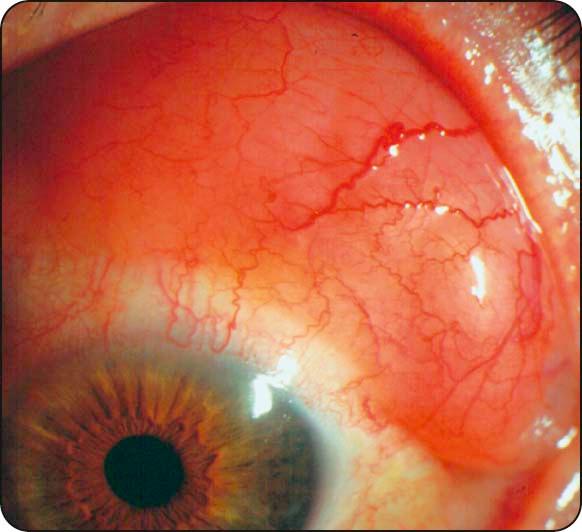
Treatment: radiotherapy, chemotherapy, and excision.
Become a Clinical Tree membership for Full access and enjoy Unlimited articles
If you are a member. Log in here